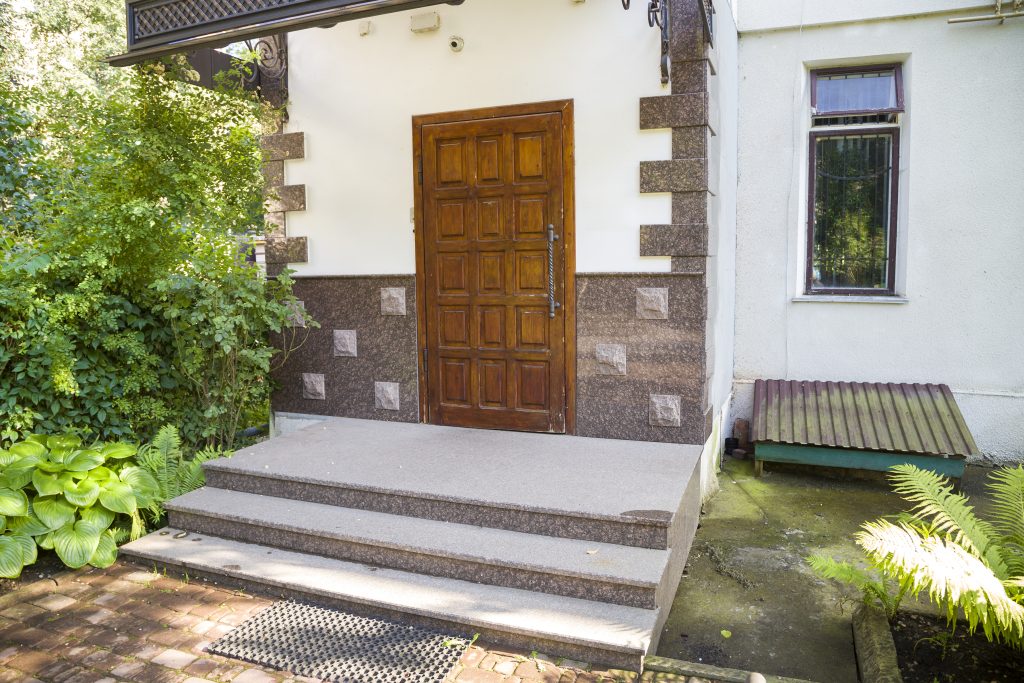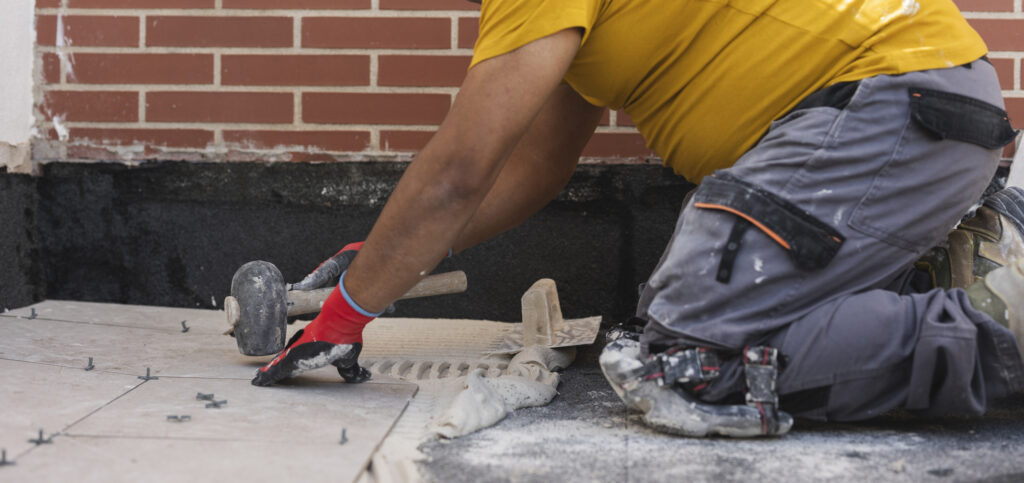Concrete is a durable material, but even the toughest surfaces can crack and deteriorate over time. When it comes to making repairs to concrete structures, whether, in residential, commercial, or industrial settings, using a high-quality repair product is essential for both the longevity and safety of the repair. Quikrete’s Epoxy Concrete Repair is a multi-purpose solution designed to address a variety of concrete damage scenarios. With its high strength and rapid cure time, it is an efficient choice for fixing cracks and bonding broken sections.

The non-sag consistency of Quikrete Epoxy Concrete Repair makes it suitable for vertical applications, providing a robust adhesive bond that can tackle substantial concrete repairs. This two-component epoxy can repair cracks, holes, breaks, and spalls in several substrates, including concrete, stucco, concrete block, brick, stone, and tile. The ease of application, combined with a quick cure time, means that repairs can be conducted swiftly, reducing the downtime in construction or repair projects.
Moreover, this product is valued for its versatility, coming in different packaging to accommodate various project sizes. Its ability to be applied with a standard caulk gun enhances its accessibility for both professional tradespeople and DIY enthusiasts. The result is a durable, strong repair that aids in restoring the structural integrity and aesthetic of concrete and masonry surfaces.
Understanding Quikrete Epoxy Concrete Repair

Quikrete Epoxy Concrete Repair is a specialized formulation designed for high-strength bonding and repairs. This product addresses a range of repair scenarios with its rapid cure time and versatile application.
Key Properties and Uses
Quikrete’s epoxy concrete repair material boasts a high strength characteristic making it ideal for structural repairs. Its non-sag property allows for vertical and overhead applications without slippage, providing a significant advantage when repairing walls or the undersides of infrastructure. Typical repairs include:
- Filling cracks and voids in concrete
- Repairing concrete surfaces such as steps and walkways
- Bonding broken pieces of concrete, stucco, stone, or brick
Due to its robust formulation, this repair adhesive serves effectively in environments requiring a durable, long-lasting repair solution.
Two Component System
The Quikrete Epoxy Concrete Repair comprises two components that need to be mixed before application:
- Epoxy resin (Part A)
- Hardener (Part B)
It is essential to mix these components thoroughly to activate the epoxy’s properties. Once mixed, the product initiates a rapid cure process, setting quickly to establish a firm bond and allowing surfaces to be used within a relatively short period post-repair.
Preparation and Application

The successful use of Quikrete Epoxy Concrete Repair revolves around meticulous preparation of the surface, proper mixing of components, and precise application procedures. Following these steps is essential for ensuring a strong bond and long-lasting durability in concrete repair.
Surface Preparation
Before applying Quikrete Epoxy Concrete Repair, the surface must be thoroughly prepared to secure the best adhesion. It entails cleaning to remove any dust, dirt, or debris, and ensuring the concrete is structurally sound. Any loose material should be brushed away or removed by a chisel when necessary. It is crucial to dampen the area with water and remove excess standing water before proceeding.
Mixing Instructions
A tube with a nozzle ensures the epoxy components mix correctly—essential for the efficacy of the product. Users should attach the nozzle to the tube and use a caulk gun to dispense and mix the two-part epoxy until it achieves a consistent color, indicating thorough mixing. The product should be used immediately after mixing to prevent it from curing in the tube.
Application Process
Once mixed, apply the epoxy onto the prepared surface using a trowel, ensuring that the repair material is firmly pressed into the voids or cracks for maximum bonding. Smoothing it to match the contour of the existing concrete provides a neat finish. A brush may be used to shape or texture the surface, as needed, to blend the repair seamlessly with the surrounding area. The quick curing nature of the product necessitates a speedy but careful application.
Repairing Different Surfaces

When undertaking repairs with products like Quikrete Epoxy Concrete Repair, it’s crucial to choose the right approach for different surfaces and to address specific concerns such as crack shrinkage and ensuring a strong bond.
Repairing Cracks in Concrete
For concrete surfaces, identifying the type of crack is essential. Hairline cracks often result from surface-level shrinkage, while wider cracks, 1/2 in (13 mm) or larger, may indicate deeper structural issues. Quikrete Epoxy Concrete Repair’s rapid cure and multi-purpose nature make it suitable for vertical repairs and bonding in concrete fixtures. The product ensures adhesion is maximized to prevent future shrinkage and cracking.
Repairing Brick and Stucco
When it comes to brick and stucco surfaces, different repair strategies are employed. For brick, the key is to fill cracks or replace damaged bricks without compromising the structural integrity. Similarly, for stucco, the repair compound must bond with the existing material while allowing for its natural expansion and contraction. Products like Quikrete’s Concrete Repair can be used effectively on these substrates, providing weather-resistant seals that blend seamlessly with the original texture.
Advanced Tips for Epoxy Repair

When embarking on a concrete repair project using Quikrete Epoxy Concrete Repair, it is crucial to understand the intricacies of working with such materials. This section highlights essential techniques for dealing with more significant fissures and ensuring proper curing after application, utilizing the product’s multi-purpose abilities and non-sag properties.
Working with Larger Cracks
For larger cracks, a two-component repair adhesive like Quikrete Epoxy is beneficial due to its thicker consistency and non-sag property. This ensures the product remains in place during application and curing. To effectively address larger gaps:
- Ensure the crack is clean and free from debris.
- If necessary, use a backing material to support the epoxy as it cures.
- Apply the epoxy using a caulk tube, maintaining steady pressure to fill the crack entirely.
Consider using additional reinforcement such as sand or fine gravel mixed into the epoxy for cracks wider than 1/4 inch to provide extra stability and minimize shrinkage during the curing process.
Curing and Post-Application
The curing process is critical for establishing a durable bond when using repair adhesives. Here are key steps to follow:
- After application, maintain a conducive environment for the epoxy to cure — keep the area dry and avoid exposure to extreme temperatures.
- Follow the manufacturer’s instructions for cure times; however, generally, a minimum of 4-6 hours is required before subjecting the area to any stress.
- Once cured, evaluate the repaired area for any voids and apply additional epoxy if necessary.
By adhering to these tips and the specific instructions provided on the product’s data sheet, a successful application of Quikrete Epoxy Concrete Repair can be achieved, providing a strong, lasting repair to damaged concrete.
Safety and Cleanup Guidelines
When using Quikrete Epoxy Concrete Repair, safety precautions should be a priority. Appropriate personal protective equipment (PPE) must be worn to prevent inhalation of dust and contact with skin or eyes. This typically includes:
- Safety goggles or glasses to shield eyes
- Dust masks to prevent inhalation of particles
- Protective gloves to guard against skin contact
In the event that the material comes into contact with one’s eyes, immediate flushing with plenty of water for at least 15 minutes is crucial. If breathing difficulties occur after inhalation, one should move to an area with fresh air and seek medical attention if symptoms persist.
The cleanup process is straightforward. Tools and spills need immediate attention before the product cures. The steps include:
- Unused Quikrete epoxy product should be discarded in a responsible manner.
- Tools or a caulking gun used in the application of the concrete patch can be cleaned with a suitable solvent as specified by the manufacturer.
- For cured materials, mechanical means such as grinding or chipping may be necessary for removal.
One should not allow the product to enter drains or waterways as it is harmful to aquatic life. All users should refer to the Quikrete Epoxy Concrete Repair Safety Data Sheet for detailed safety and disposal information.
Proper adherence to these guidelines will ensure a safe environment during the repair of concrete structures in a building, and they help maintain the integrity and longevity of the concrete patch.

 CALL US NOW
CALL US NOW



